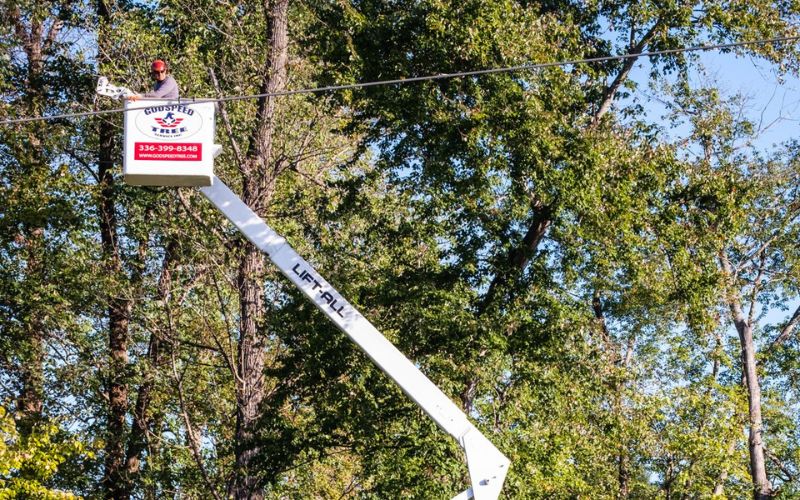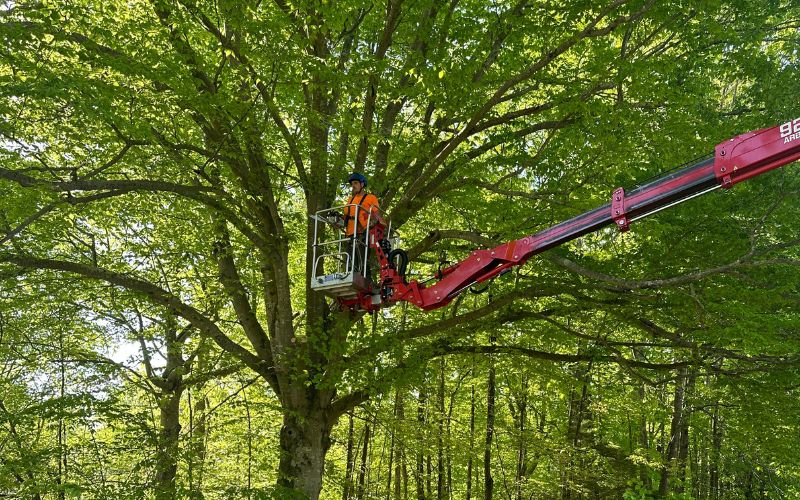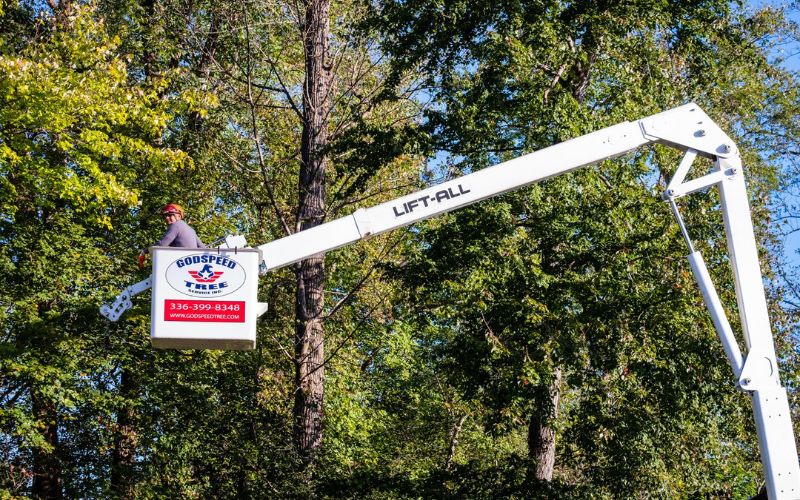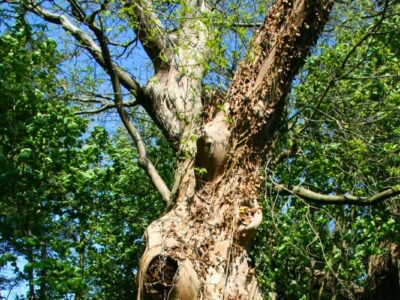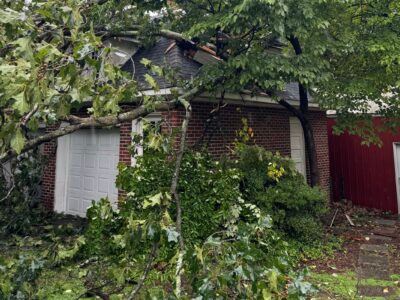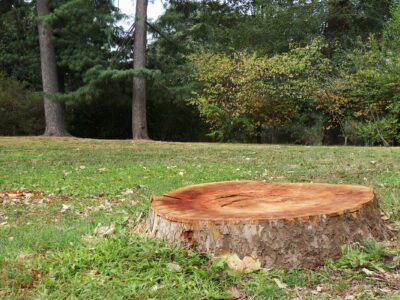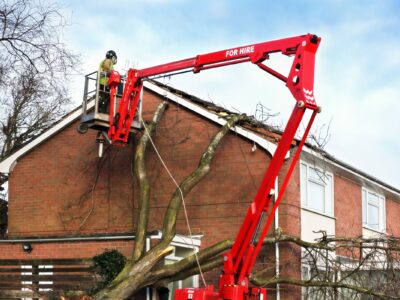7 Signs it’s Time to Prune Your Trees
February 27, 2024
You’re responsible for the safety of trees on your property so it’s important to recognize the signs that your trees need to be pruned (before someone gets hurt).
Did you know that your trees need you? They do. With the exception of forest trees in undeveloped areas, when a tree outgrows its location or is damaged in a winter storm, you become responsible for making repairs that keep trees safe and healthy. This usually means pruning is necessary so it’s important to recognize the signs it’s time to prune your trees.
Why Trees Need Pruning
No matter where you live in the Winston-Salem area, if there’s anything around you that could be damaged or injured by falling branches, you’ll almost certainly need to prune your trees. While many people value having trees around them, homeowners, urban planners, civil engineers, and even landscape architects have not always done a good job of accommodating the realistic mature size of trees in urban and suburban areas. Mature tree size, along with tree damage from weather, pests, and diseases are among the main reasons trees need pruning.
7 Signs That a Tree Needs to be Pruned
Some indicators that a tree should be pruned are pretty obvious – broken branches or a totally overgrown canopy are definitely in need of professional pruning. But other signs may not be as obvious to most people. Below, we’ve described the most common signs that it’s time to call in an arborist for a little tree trimming.
Sign #1 -The Tree’s Shape is “Off”
The first sign that you might need to prune your trees is when evaluating their overall form. While trees do best with early structural pruning to ensure a good mature form, periodic or corrective pruning may be needed on mature trees.
Look for these shape-related problems that indicate a need for pruning:
- an uneven or unbalanced-looking crown
- side branches that have grown too large, too long, or too heavy (especially if they’re hanging over your roof!)
- more than one central leader or main trunk
If you’re not sure how to evaluate your trees, we offer consultations and evaluations of your trees and their health.
Sign #2 -Visible Crown Damage
If your tree has visible damage, you’ll want to have the damaged areas pruned out and corrective pruning done as suggested by a professional. Any weakened or dead branches are a potential hazard if they drop, as falling branches can further injure the tree as well as any people or property those branches might fall on.
Here’s what to look for:
- broken branches – either stubs left after a branch has broken off, or branches that are broken but still hanging on
- branches with areas of dieback
Sign #3 – Unwanted & Unnatural Growth
Tree branches grow from their endmost point or tip, and generally taper naturally as they spread outward from the tree’s main trunk. If you see branches that have been poorly pruned with heading cuts, the extra sprouting twigs and branches that form around a heading cut should be removed and the heading cut corrected. This is because this spindly growth is weakly attached to the main branch and can break off at any time.
Other unwanted branch growth includes water sprouts or suckers. These are small shoots that grow vertically along a branch, usually stimulated to grow in response to pruning cuts. These suckers, if left, will grow into branches in places and at angles that are detrimental to your tree’s structure, balance, and crown openness.
Sign #4 – Touching or Crowding Nearby Structures
If your trees are growing near fences, buildings, your neighbor’s house, or beneath overhead power lines, they may need to be pruned for safety reasons.
Large tree species should never be planted under power lines! But, if they are, the tree’s crown needs to be pruned to fit safely around the lines and avoid knocking out power in a storm.
It’s also important to keep branches away from fences, roofs, the sides of buildings, and away from windows to avoid storm damage. Branches rubbing against surfaces will abrade bark and damage surfaces (which is not good if that surface is your siding or roof!). The damaged branches also provide pests and diseases a way into your tree, leading to problems down the road.
If branches from your tree encroach onto your neighbor’s property, it’s best to prune them back. If a tree or branch is unhealthy or potentially unsafe AND is located where it could fall and damage property – or worse, injure or kill someone – that tree may be classified as a hazard. And you’re liable for any damage caused by a hazard tree.
While we offer storm damage cleanup and emergency tree service, it’s always better to reduce the need for these by keeping your trees healthy and properly pruned.
Sign #5 – Your Tree is Annoying the Neighbors
In addition to potentially hazardous branches growing into your neighbor’s yard, you should prune to minimize other tree issues caused by encroaching branches. Don’t let leaves and fruit or seed litter land on your neighbor’s property. They won’t be happy having to clean it all up and could blame you for the slip-and-fall hazards it creates.
Also consider whether your trees have grown too large and cast too much shade on your neighbor’s house or have shaded out their prized plants. If so, you may want to reduce your trees’ canopy or thin their crowns by pruning.
Sign #6 – Poor Fruiting or Flowering
Trees may need some rejuvenation pruning if they are losing vigor but are not diseased or failing. Signs that your trees need pruning to stimulate new, vigorous growth include:
- reduced fruiting and flowering
- smaller fruit
- branch dieback
- a patchy crown of leaves
For fruit trees in particular, it’s best to keep them pruned to a practical height. This will let you easily reach the fruit by hand or from a stable orchard ladder.
Sign #7 – Pests and Diseases
If you notice that your trees have areas of damage caused by pests or diseases, you may need to remove the diseased growth or infested leaves and branches.
Some diseases, such as fireblight, start at the branch tips but will steadily continue down the branches unless it’s pruned off. It’s better to prune out and discard the first signs of damaged wood before an entire diseased branch needs to be removed.
For branches with insect damage, it’s best to identify the insects before branches are pruned out. Pruning is not the solution for all types of insect damage. In fact, pruning cuts may stress further an already stressed tree. If you’re not certain what’s causing the damage, call in a Certified Arborist for a tree inspection.
If you’re pruning diseased branches, follow sanitation procedures and sterilize your pruning blades between cuts to avoid spreading pathogens.
Prune Early for Long-Term Savings
The best insurance for a healthy, mature tree is to have it properly pruned when it’s young so that it can develop a sound branching structure. Then, as it matures, pruning can be kept to a minimum. This is not only better for the tree, as each pruning cut is a wound the tree must seal off, but is also more economical. Corrective pruning and pruning large branches are more expensive and time-consuming than periodic pruning to refine a tree’s shape or to remove unwanted branches while they’re still small.
Need a Helping Hand? Tree Pruning Isn’t a DIY Job
It’s always a good reminder to consider the scope of a pruning job before embarking on it. Once you start pruning branches that are not accessible from the ground, you increase your risk of accidents and injury. You also increase the risk of damage to your tree if you aren’t versed in pruning techniques or if the branches you prune tear bark or break other branches as they fall.
We always advise homeowners to consider professional pruning before they get out their loppers. We offer a range of tree pruning services, and we can assess your trees and your garden to give you professional advice on how to care for your landscape.
If you’re looking for a trusted local tree service company to properly prune your trees, give the arborists at Godspeed Tree a call at 336-399-8348. We’re always here to help you!
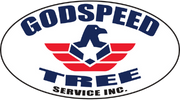
Godspeed Tree Service
Owned and operated with high standards and consistent reliability by Bobby Gates, Godspeed Tree Service has earned the trust of the North Carolina Triad community over the course of more than 25 years in business. With a strong emphasis on safety, conscientious training, and accommodating the needs of each client, you can't go wrong by hiring Godspeed for any of your tree service needs!
